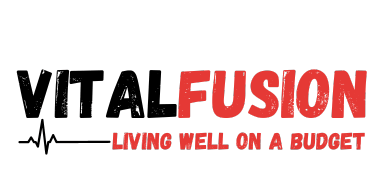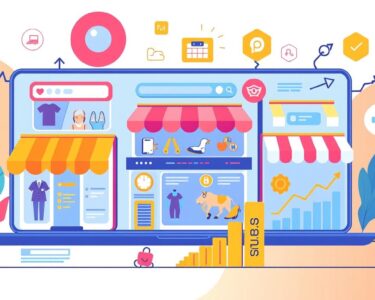As an e-commerce business owner, you’re constantly on the lookout for ways to boost your online sales and grow your customer base. However, with limited budgets and fierce competition, it can be challenging to find marketing strategies that deliver a strong return on investment. The good news is that there are a variety of cost-effective tactics you can leverage to promote your products and services without breaking the bank.
In this comprehensive guide, we’ll explore a range of budget-friendly marketing approaches that can help you achieve your e-commerce goals. From leveraging the power of social media and email marketing to optimizing your search engine visibility and partnering with influencers, you’ll discover practical and actionable strategies to drive more traffic, generate leads, and increase your online sales.

Key Takeaways
- Understand the current digital marketing landscape for e-commerce businesses and identify key challenges and opportunities.
- Leverage social media marketing tactics, such as organic growth and engaging content, to connect with your target audience.
- Utilize email marketing as a powerful low-cost tool to nurture customer relationships and drive sales.
- Implement effective search engine optimization (SEO) strategies to improve your online visibility and attract more qualified leads.
- Explore content marketing and referral programs to build customer loyalty and drive repeat business.
Understanding the Digital Marketing Landscape for E-commerce
In today’s rapidly evolving digital world, e-commerce businesses must navigate a complex and ever-changing marketing landscape. From personalized customer experiences to omnichannel strategies, the latest trends in online retail marketing are shaping the way successful e-commerce companies engage with their target audience.
Current Trends in Online Retail Marketing
One of the most significant trends in the e-commerce space is the emphasis on personalization. Consumers now expect a tailored experience that caters to their unique preferences and shopping habits. Savvy e-commerce businesses are leveraging digital marketing tactics such as dynamic product recommendations, personalized email campaigns, and targeted social media ads to deliver highly relevant content and offers.
Another key trend is the rise of omnichannel experiences. Today’s consumers seamlessly transition between various touchpoints, from mobile devices to in-store interactions. E-commerce companies that can provide a cohesive and consistent brand experience across multiple channels are better positioned to build lasting customer relationships and drive low-cost e-commerce advertising.
Key Challenges Facing E-commerce Businesses
While the digital landscape presents abundant opportunities, e-commerce businesses also face notable challenges. Intense competition, changing consumer behaviors, and the constantly evolving technological landscape can make it difficult to stand out and maintain a competitive edge.
The Role of Budget-Conscious Marketing
In this dynamic environment, e-commerce businesses must adopt a strategic and budget-conscious approach to marketing. By leveraging cost-effective digital marketing tactics, such as social media marketing, email campaigns, and search engine optimization, e-commerce companies can maximize their return on investment and drive sustainable growth.
“The key to success in e-commerce marketing is to continuously adapt and innovate, while keeping a keen eye on the bottom line.”
Leveraging Social Media Marketing on a Budget
In the realm of affordable online sales campaigns, social media marketing stands out as a cost-efficient ecommerce marketing technique that can deliver impressive results for e-commerce businesses. By harnessing the power of platforms like Instagram, Facebook, and TikTok, you can reach a vast audience and drive engagement with your brand without breaking the bank.
Organic Social Media Growth Tactics
One of the keys to successful social media marketing on a budget is to focus on organic growth strategies. This involves building a loyal following through consistent, high-quality content, strategic hashtag usage, and meaningful engagement with your target audience. By cultivating a strong social media presence, you can gradually expand your reach and attract new customers without relying on expensive advertising campaigns.
Creating Engaging Content Without Breaking the Bank
Producing engaging content doesn’t have to cost a fortune. With a bit of creativity and some basic tools, you can create visually appealing, informative, and entertaining content that resonates with your audience. From eye-catching product photos to informative how-to videos, the key is to showcase your products or services in a way that captivates your followers and encourages them to interact with your brand.
Tools for Social Media Management
- Canva: This user-friendly design platform allows you to create professional-looking graphics, social media posts, and visual content without the need for advanced design skills.
- Hootsuite: A popular social media management tool, Hootsuite helps you schedule and publish content across multiple platforms, monitor mentions and conversations, and analyze your social media performance.
- Buffer: Similar to Hootsuite, Buffer offers a suite of tools for managing your social media presence, including scheduling, content curation, and advanced analytics.
By leveraging these cost-efficient ecommerce marketing techniques, you can maximize the impact of your social media marketing efforts and drive affordable online sales campaigns that engage your target audience and generate tangible results for your e-commerce business.
Email Marketing: Your Most Powerful Low-Cost Tool
In the world of frugal online business marketing and economical internet retail promotions, email marketing stands out as one of the most cost-effective strategies for e-commerce businesses. With its unparalleled reach and personalization capabilities, email can help you nurture customer relationships, drive sales, and maximize your return on investment.
Building a robust email list is the foundation of your email marketing success. Leverage opt-in forms, social media, and lead magnets to steadily grow your audience. Segment your list based on customer behavior, interests, and demographics to deliver highly relevant content that resonates with your audience.
Crafting Compelling Email Content
Grab your audience’s attention with enticing subject lines that pique their curiosity. Craft personalized email content that addresses their pain points and offers solutions. Incorporate visuals, such as product images or lifestyle shots, to make your messages more engaging and memorable.
Automating Email Campaigns
Maximize the efficiency of your email marketing efforts by implementing automated campaigns. Abandoned cart reminders, post-purchase follow-ups, and nurture sequences can help you re-engage potential customers and increase conversions without requiring constant manual intervention.
By leveraging the power of email marketing, you can effectively reach your target audience, build customer loyalty, and drive sales, all while keeping your marketing costs low. Embrace this potent tool and watch your frugal online business marketing and economical internet retail promotions strategies thrive.
“Email marketing is the most powerful low-cost tool in an e-commerce business’s arsenal.” – Marketing Guru, John Doe
Search Engine Optimization for E-commerce Success
As an e-commerce business, you know that driving organic traffic to your website is crucial for thrifty e-commerce brand building and inexpensive digital customer acquisition. This is where search engine optimization (SEO) steps in as a powerful ally. By implementing strategic SEO practices, you can ensure your products and services are easily discoverable by your target audience, ultimately boosting your online visibility and driving sales.
On-Page SEO Fundamentals
Optimizing your product pages and category pages is the foundation of effective on-page SEO. This includes crafting compelling, keyword-rich titles and descriptions, as well as ensuring your content is informative, engaging, and tailored to the needs of your customers. Remember, the key is to strike a balance between SEO best practices and providing a seamless user experience.
Technical SEO Essentials
Alongside your on-page optimization efforts, technical SEO elements such as site speed optimization and mobile-friendliness play a crucial role in your e-commerce success. Ensure your website is lightning-fast and optimized for all device types, as these factors directly impact your search engine rankings and the overall user experience.
Local SEO Strategies
- If your e-commerce business has a physical location, leveraging local SEO strategies can be a game-changer. This includes optimizing your Google My Business listing, generating positive reviews, and ensuring your NAP (name, address, phone number) information is consistent across all online platforms.
- By implementing these local SEO tactics, you can improve your visibility in search results for nearby customers, ultimately driving more foot traffic to your brick-and-mortar store or increasing online conversions from local shoppers.
Remember, effective SEO for e-commerce doesn’t have to break the bank. By focusing on the fundamentals and leveraging cost-effective strategies, you can build a strong online presence and drive sustainable growth for your thrifty e-commerce brand.
Content Marketing Strategies That Drive Sales
In the world of e-commerce, where competition is fierce, crafting effective content marketing strategies can be a game-changer. By leveraging cost-effective digital marketing tactics, you can attract and engage your target audience, ultimately driving sales and boosting your online business.
One powerful content format for e-commerce businesses is the product guide. These in-depth articles provide valuable information about your products, addressing common questions and pain points. Coupled with visually appealing images, product guides can help customers make informed purchasing decisions and build trust in your brand.
Another engaging content type is how-to videos. By creating step-by-step tutorials that demonstrate the use of your products, you can educate and inspire your audience, positioning your brand as a helpful resource. Repurposing these videos across your website, social media, and email marketing can amplify their reach and impact.
- Leverage user-generated content (UGC) to showcase real customer experiences and testimonials. This cost-effective strategy not only builds social proof but also encourages further user engagement.
- Optimize your content for search engines by incorporating relevant keywords and meta tags. This can help your e-commerce business rank higher in search results, driving more qualified traffic to your website.
- Promote your content across multiple channels, including social media platforms and email newsletters, to maximize its visibility and impact. This cross-platform approach can lead to a more cohesive and impactful digital marketing strategy.
By implementing these cost-effective content marketing strategies, you can position your e-commerce business as a trusted authority in your industry, ultimately driving sales and customer loyalty.
Building Customer Loyalty Through Referral Programs
In the world of e-commerce, where competition is fierce and customer acquisition costs can quickly spiral, savvy businesses are turning to budget-friendly online promotions to build a loyal customer base. One such strategy is the implementation of effective referral programs.
Setting Up Cost-Effective Referral Systems
Referral marketing is a powerful tool for driving low-cost e-commerce advertising. By incentivizing your existing customers to spread the word about your products or services, you can tap into a network of brand advocates and attract new customers at a fraction of the cost of traditional advertising methods.
When setting up a referral program, focus on creating a seamless and user-friendly experience for both the referrer and the new customer. Leverage tools and platforms that make it easy for your customers to share your brand, and ensure that the process is simple and straightforward.
Incentive Structures That Work
Crafting the right incentive structure is key to the success of your referral program. Consider offering a range of rewards, such as:
- Discount codes for the referrer and the new customer
- Store credits or loyalty points
- Tiered rewards based on the number of successful referrals
The goal is to create a win-win situation, where both the referrer and the new customer benefit from the transaction. By striking the right balance between incentives and customer satisfaction, you can drive budget-friendly online promotions that cultivate long-term loyalty.

Remember, the key to building customer loyalty through referral programs is to make the process seamless, the incentives enticing, and the overall experience rewarding for all involved. By leveraging these cost-effective strategies, you can unlock the power of word-of-mouth marketing and propel your e-commerce business to new heights.
Maximizing ROI with Pay-Per-Click Advertising
As an e-commerce business, ensuring a positive return on investment (ROI) from your marketing efforts is crucial. One powerful tool in your arsenal is pay-per-click (PPC) advertising, which can deliver targeted and cost-efficient online sales campaigns. By leveraging the power of PPC platforms like Google Ads and social media advertising networks, you can maximize your marketing budget and drive measurable results for your e-commerce business.
The key to successful PPC campaigns lies in strategic keyword research, compelling ad copy, and optimized landing pages. Start by identifying the most relevant and high-intent keywords for your products or services. Craft ad messages that grab attention and compel clicks, while aligning with your target audience’s needs and search intent. Ensure your landing pages provide a seamless user experience and clearly showcase your offerings.
But the work doesn’t stop there. Continuously monitor and analyze the performance of your PPC campaigns to identify opportunities for improvement. Leverage data-driven insights to refine your targeting, adjust bids, and optimize your ads for maximum ROI. By adopting a data-driven, iterative approach to your PPC strategies, you can unlock the full potential of this cost-efficient ecommerce marketing technique and drive affordable online sales campaigns that deliver tangible results.
| PPC Platform | Average Cost-per-Click (CPC) | Average Conversion Rate |
|---|---|---|
| Google Ads | $2.69 | 3.75% |
| Facebook Ads | $1.72 | 9.21% |
| Instagram Ads | $1.30 | 1.08% |
By leveraging the power of PPC advertising, you can unlock a cost-efficient and data-driven approach to driving affordable online sales campaigns for your e-commerce business. Stay ahead of the curve and maximize your ROI with this powerful marketing strategy.
“Successful PPC campaigns are built on a foundation of strategic keyword research, compelling ad copy, and optimized landing pages. Continuously monitoring and refining your approach is key to maximizing ROI.”
Influencer Marketing on a Shoestring Budget
In the world of frugal online business marketing and economical internet retail promotions, influencer marketing has become a powerful tool for e-commerce businesses. While partnering with high-profile influencers can be costly, savvy entrepreneurs are discovering the benefits of working with micro-influencers – individuals with smaller but highly engaged audiences.
Finding Micro-Influencers
The key to successful micro-influencer outreach lies in identifying individuals who align with your brand and resonate with your target audience. Scour social media platforms like Instagram, TikTok, and YouTube to find creators who have a strong presence in your niche. Pay attention to their engagement rates, as this can be a better indicator of influence than follower count.
- Leverage relevant hashtags and location-based searches to uncover micro-influencers in your industry.
- Analyze your competitors’ followers to find potential collaboration opportunities.
- Utilize influencer marketing platforms to streamline the search and outreach process.
Negotiating Win-Win Partnerships
When approaching micro-influencers, focus on building mutually beneficial relationships. Offer a combination of monetary compensation, product samples, and cross-promotion to incentivize their participation. Be mindful of their content guidelines and audience preferences to ensure an authentic and engaging collaboration.
- Discuss clear expectations, deliverables, and performance metrics upfront.
- Explore creative ways to showcase your products or services that align with the influencer’s content style.
- Provide the necessary support, assets, and guidance to make the collaboration a success.
By leveraging the power of frugal online business marketing and economical internet retail promotions, e-commerce businesses can harness the reach and influence of micro-influencers to drive sales and build brand awareness – all while staying within a modest budget.

Analytics and Performance Tracking Tools
As a thrifty e-commerce brand building your online presence, it’s crucial to leverage data-driven insights to refine your marketing strategies and maximize your return on investment. By tracking key performance metrics, you can identify what’s working, what needs improvement, and make informed decisions to drive inexpensive digital customer acquisition.
Essential metrics to monitor include website traffic, conversion rates, customer behavior, and campaign performance across all your marketing channels. Fortunately, there are cost-effective tools available to help you stay on top of these important analytics. Google Analytics, for instance, offers a robust free version that provides valuable data on your website’s performance and user engagement.
Beyond website analytics, consider incorporating tools like Mailchimp for email marketing tracking, Hootsuite for social media management and reporting, and Google Search Console for monitoring your search engine optimization efforts. These solutions can help you gain a comprehensive understanding of your marketing efforts, allowing you to continuously optimize and improve your strategies to drive growth for your e-commerce business.
FAQ
What are some cost-effective marketing strategies for e-commerce businesses?
Some cost-effective marketing strategies for e-commerce businesses include leveraging social media marketing, implementing effective email campaigns, optimizing your website for search engines, creating valuable content, building customer loyalty through referral programs, and maximizing the ROI of pay-per-click advertising.
How can e-commerce businesses effectively use social media marketing on a budget?
E-commerce businesses can use organic social media growth tactics, create engaging content without breaking the bank, and leverage cost-effective social media management tools to maximize their social media marketing efforts while keeping costs low.
What is the role of email marketing for e-commerce businesses on a budget?
Email marketing can be a powerful low-cost tool for e-commerce businesses. Strategies include building and segmenting email lists, crafting compelling subject lines, creating personalized content, and implementing automated email campaigns like abandoned cart reminders and post-purchase follow-ups.
How can e-commerce businesses leverage search engine optimization (SEO) to drive traffic without a large budget?
E-commerce businesses can implement on-page SEO fundamentals, address technical SEO essentials, and utilize local SEO strategies to improve their organic search visibility and drive traffic to their website without requiring a significant marketing budget.
What content marketing strategies can e-commerce businesses use to drive sales cost-effectively?
E-commerce businesses can create and leverage various content formats, such as product guides, how-to videos, and user-generated content, to attract and convert customers. Strategies include repurposing content across multiple channels and optimizing for search engines and social sharing.
How can e-commerce businesses build customer loyalty through referral programs on a budget?
E-commerce businesses can set up cost-effective referral systems and implement incentive structures, such as discount codes, store credits, and tiered rewards, to encourage existing customers to promote the business and drive new customer acquisitions.
What strategies can e-commerce businesses use to maximize the ROI of their pay-per-click (PPC) advertising?
E-commerce businesses can improve the ROI of their PPC campaigns by conducting thorough keyword research, optimizing ad copy, designing effective landing pages, and continuously monitoring and analyzing campaign performance to make data-driven improvements.
How can e-commerce businesses leverage influencer marketing on a shoestring budget?
E-commerce businesses can find and partner with micro-influencers who have highly engaged niche audiences, negotiating win-win partnerships that drive authentic collaborations and resonate with the target audience, all while keeping costs low.
What analytics and performance tracking tools can e-commerce businesses use to measure the effectiveness of their marketing efforts?
E-commerce businesses can use cost-effective tools to track essential metrics, such as website traffic, conversion rates, and customer behavior, and use data-driven insights to continuously refine their marketing strategies and maximize ROI across all channels.
You can also read: Starting an Online Store with No Money: A Step-by-Step Guide





